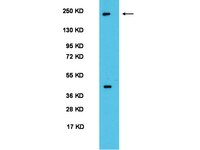Shell neurons of the master circadian clock coordinate the phase of tissue clocks throughout the brain and body.
Evans, JA; Suen, TC; Callif, BL; Mitchell, AS; Castanon-Cervantes, O; Baker, KM; Kloehn, I; Baba, K; Teubner, BJ; Ehlen, JC; Paul, KN; Bartness, TJ; Tosini, G; Leise, T; Davidson, AJ
BMC biology
13
43
2015
Abstract anzeigen
Daily rhythms in mammals are programmed by a master clock in the suprachiasmatic nucleus (SCN). The SCN contains two main compartments (shell and core), but the role of each region in system-level coordination remains ill defined. Herein, we use a functional assay to investigate how downstream tissues interpret region-specific outputs by using in vivo exposure to long day photoperiods to temporally dissociate the SCN. We then analyze resulting changes in the rhythms of clocks located throughout the brain and body to examine whether they maintain phase synchrony with the SCN shell or core.Nearly all of the 17 tissues examined in the brain and body maintain phase synchrony with the SCN shell, but not the SCN core, which indicates that downstream oscillators are set by cues controlled specifically by the SCN shell. Interestingly, we also found that SCN dissociation diminished the amplitude of rhythms in core clock gene and protein expression in brain tissues by 50-75 %, which suggests that light-driven changes in the functional organization of the SCN markedly influence the strength of rhythms in downstream tissues.Overall, our results reveal that body clocks receive time-of-day cues specifically from the SCN shell, which may be an adaptive design principle that serves to maintain system-level phase relationships in a changing environment. Further, we demonstrate that lighting conditions alter the amplitude of the molecular clock in downstream tissues, which uncovers a new form of plasticity that may contribute to seasonal changes in physiology and behavior. | | 26099272
 |
Responses of brain and behavior to changing day-length in the diurnal grass rat (Arvicanthis niloticus).
Leach, G; Ramanathan, C; Langel, J; Yan, L
Neuroscience
234
31-9
2013
Abstract anzeigen
Seasonal affective disorder (SAD) is a major depressive disorder that recurs in the fall and winter when day-length gets short. It is well accepted that day-length is encoded by the principal circadian clock located in the suprachiasmatic nucleus (SCN), but very little is known about day-length encoding in diurnal mammals. The present study utilized the grass rat, Arvicanthis niloticus, to investigate how the circadian system responds to photoperiodic changes in a diurnal mammal that shows day-length-dependent mood changes. The animals were initially housed in equatorial day-length (12h, EP) followed by either long (16h, LP) or short (8h, SP) photoperiods. The LP animals showed an expansion of the peak phase of the PER1 and PER2 rhythm in the SCN as well as an extended behavioral active phase. In contrast, the SP animals did not show any compression of their active phase nor a change in the peak duration of PER1 or PER2 expression, compared to those in EP. The results suggest that the circadian system in the diurnal grass rats is less responsive when day-length gets short compared to when it gets longer. The depression-like behaviors were assessed using sweet solution preference (SSP) and forced swimming test (FST). Animals in the SP group showed decreased SSP and increased immobility time in FST as compared to the EP group, suggesting a depressive phenotype. The present study serves as the first step toward exploring the role that the circadian system plays in SAD using a diurnal rodent model. | Immunohistochemistry | 23313227
 |
Antibodies for assessing circadian clock proteins in the rodent suprachiasmatic nucleus.
LeSauter, J; Lambert, CM; Robotham, MR; Model, Z; Silver, R; Weaver, DR
PloS one
7
e35938
2011
Abstract anzeigen
Research on the mechanisms underlying circadian rhythmicity and the response of brain and body clocks to environmental and physiological challenges requires assessing levels of circadian clock proteins. Too often, however, it is difficult to acquire antibodies that specifically and reliably label these proteins. Many of these antibodies also lack appropriate validation. The goal of this project was to generate and characterize antibodies against several circadian clock proteins. We examined mice and hamsters at peak and trough times of clock protein expression in the suprachiasmatic nucleus (SCN). In addition, we confirmed specificity by testing the antibodies on mice with targeted disruption of the relevant genes. Our results identify antibodies against PER1, PER2, BMAL1 and CLOCK that are useful for assessing circadian clock proteins in the SCN by immunocytochemistry. | | 22558277
 |










